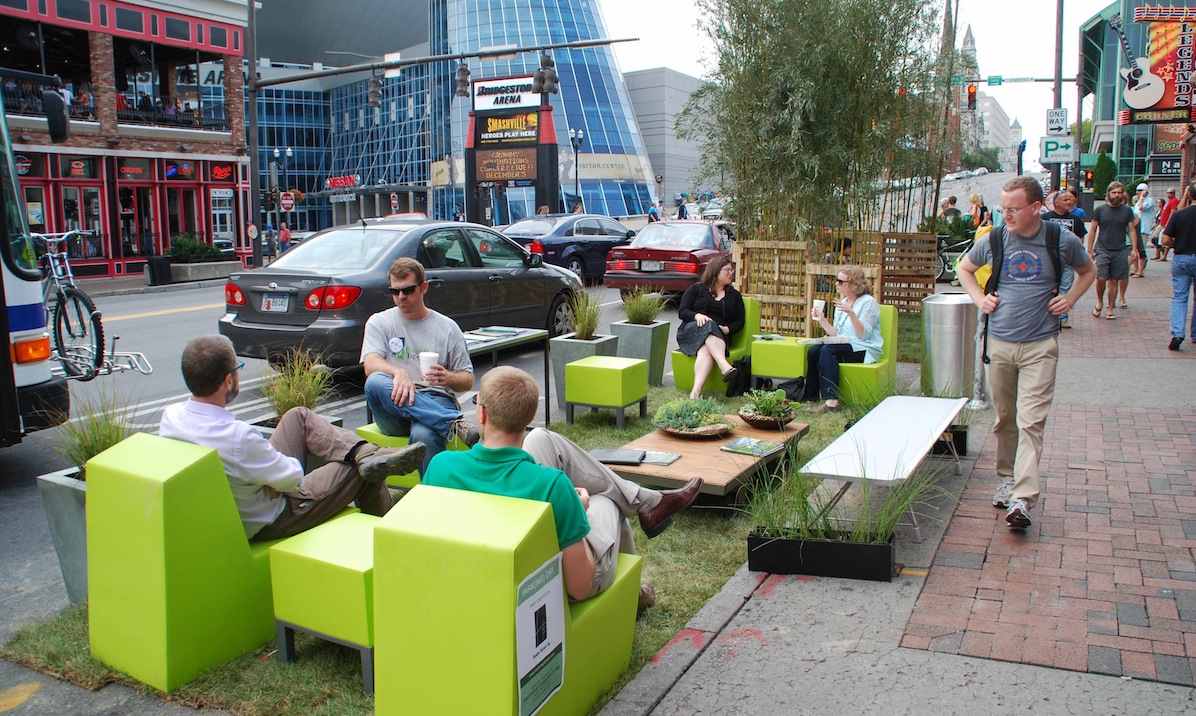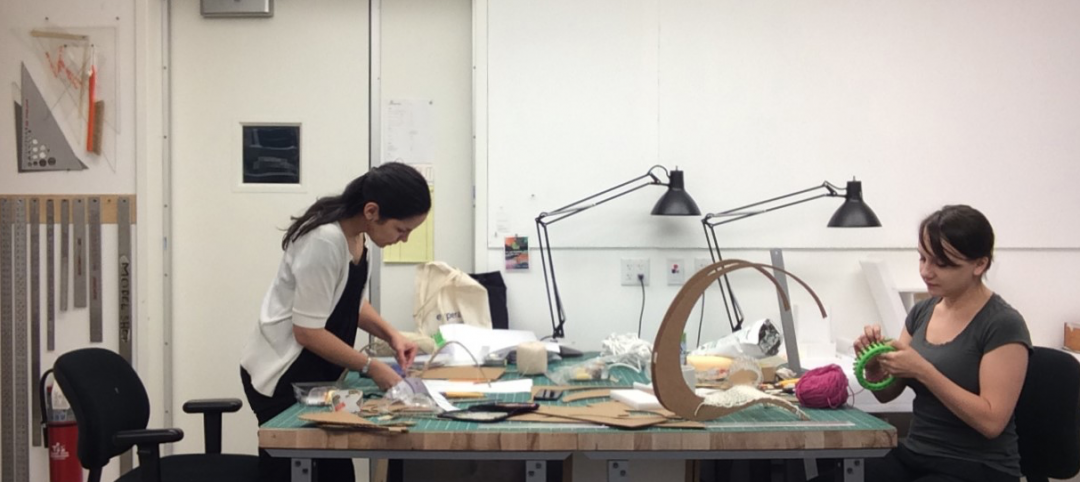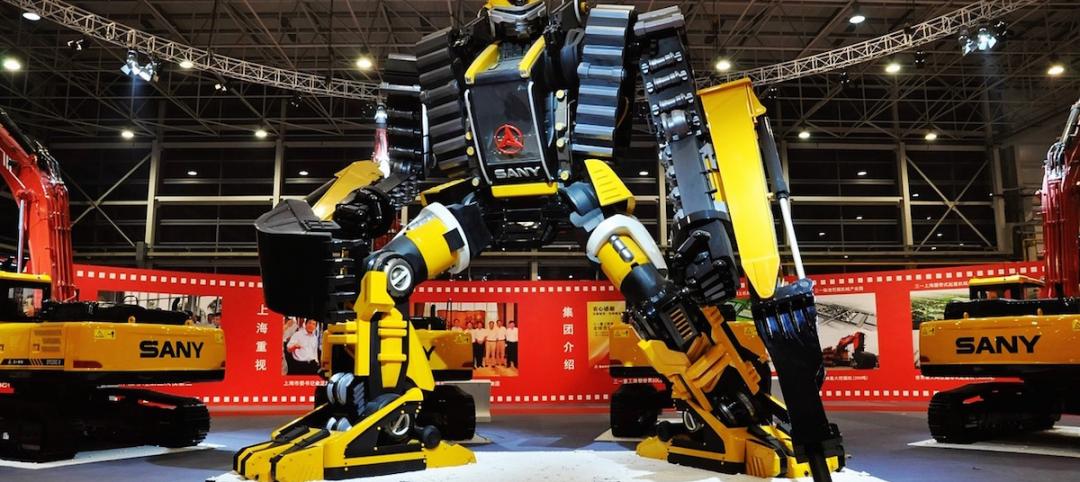Anyone who’s walked Chicago’s Millennium Park or New York’s High Line knows the awe-inspiring beauty of these celebrated public spaces is due not to their grand scale, but rather to their tiniest details and charming character—the manicured landscaping, quaint places of respite, tasteful art installations, lush gardens.
The lesson, say city planners, is that it doesn’t take vast acreage or hundreds of millions of dollars to create vibrant, modern public spaces that strengthen the social fabric of a city. In fact, a budding urban planning movement that is sprouting in cities across the globe proves that low-cost, small-scale, community-driven projects have the power to effect positive change.
There are a number of terms used to describe the movement—tactical urbanism, DIY urbanism, urban hacking, guerilla urbanism—and there are countless examples of successful projects and strategies, from street makeovers to pop-up parks to gardening initiatives to public art exhibits.
On the extreme side of the spectrum are projects like the 300-foot-long water slide installed down the middle of a street in Bristol, England, in May 2014 (www.BDCnetwork.com/WaterSlide). Then there’s Park(ing) Day, where citizens, artists, and activists in more than 160 cities collaborate to temporarily transform metered parking spaces into micro parks, gardens, and art exhibits.
San Francisco’s Pavement to Parks program teams city agencies with community groups to “hack” the city’s streets and public rights-of-way for community uses: sidewalk extensions, parklets, mini plazas, gardens, art walls, bike corrals, alleyway upgrades. The projects may be small, but their collective impact can be significant. Consider this: San Francisco’s streets and public rights-of-way make up 25% of the total land area and represent more space than all the public parks combined.
But not all micro urban remakes are created equal, as urban planner Mike Lydon writes in his four-volume guide to tactical urbanism (http://tacticalurbanismguide.com). For initiatives to serve as true change agents, they must: offer local solutions to local planning problems; develop social capital between citizens, community groups, and government; apply a deliberate, phased approach to instigating change; and offer a short-term, low-risk commitment, with the possibility for high reward. The goal, writes Lydon, is to foster long-term change through high-impact, temporary measures. “Long-term change often starts with the process of trying something small,” he writes.
Speaking of tactical urbanism, BD+C is proud to be partnering this year with Baltimore nonprofit Parks & People Foundation and USGBC National—along with building product manufacturers and a team of architects and contractors from Ziger/Snead Architects and Modular Genius—to build an uber-green training center for Parks & People. Located steps from the organization’s shiny, new LEED Platinum-registered headquarters in Baltimore’s historic Druid Hill Park, the 630-sf Growing Green Center will serve a critical role in Parks & People’s efforts to connect with and train local residents, students, and community groups on how to remake their streets and neighborhoods through landscaping, gardening, and urban infrastructure projects.
The Growing Green Center will be on display at Greenbuild 2015, Washington, D.C., Nov. 18-20, as part of BD+C’s GreenZone exhibit. At the conclusion of the conference, the structure will be trucked 39 miles to Baltimore, where it will become a permanent fixture at Druid Hill Park.
More from Author
David Barista | Aug 15, 2019
3 ‘Giant’ AEC market trends for 2019-2020
We’re starting to see a shift toward custom research, thanks in part to the influx of data, data tools, and analytics expertise in the AEC market.
David Barista | Jul 31, 2019
Amenities war no more? Research report explores multifamily market
Multifamily developers show no signs of pulling back on specialty spaces and unique offerings in an effort to attract high-quality tenants, according to new research from Multifamily Design+Construction.
David Barista | Dec 30, 2016
An open letter to the AEC C-suite
Women AEC professionals need you to take action.
David Barista | Sep 6, 2016
Innovation intervention: How AEC firms are driving growth through R&D programs
AEC firms are taking a page from the tech industry, by infusing a deep commitment to innovation and disruption into their cultural DNA.
David Barista | Jun 27, 2016
If ‘only the paranoid survive,’ what does it take to thrive?
“Sooner or later, something fundamental in your business world will change.” The late Andrew Grove (1936-2016), Co-founder of tech giant Intel Corp., lived by these words.
David Barista | May 31, 2016
As commercial buildings get ‘smarter,’ concerns rise over cybercrime
As buildings become increasingly connected, opportunistic hackers have countless avenues into a building’s network.
David Barista | May 9, 2016
Is the nation’s grand tech boom really an innovation funk?
Despite popular belief, the country is not in a great age of technological and digital innovation, at least when compared to the last great innovation era (1870-1970).
David Barista | Mar 31, 2016
Deep Learning + AI: How machines are becoming master problem solvers
Besides revolutionary changes to the world’s workforce, artificial intelligence could have a profound impact on the built environment and the AEC industry.
David Barista | Feb 24, 2016
Is the booming freelance economy a threat to AEC firms?
By shifting the work (and revenue) to freelancers, “platform capitalism” startups have taken considerable market share from traditional businesses.
David Barista | Jan 26, 2016
How the Fourth Industrial Revolution will alter the globe’s workforce
The next great technological metamorphosis will be unlike anything humankind has experienced before, due to the sheer size, speed, and scope of disruption.
















